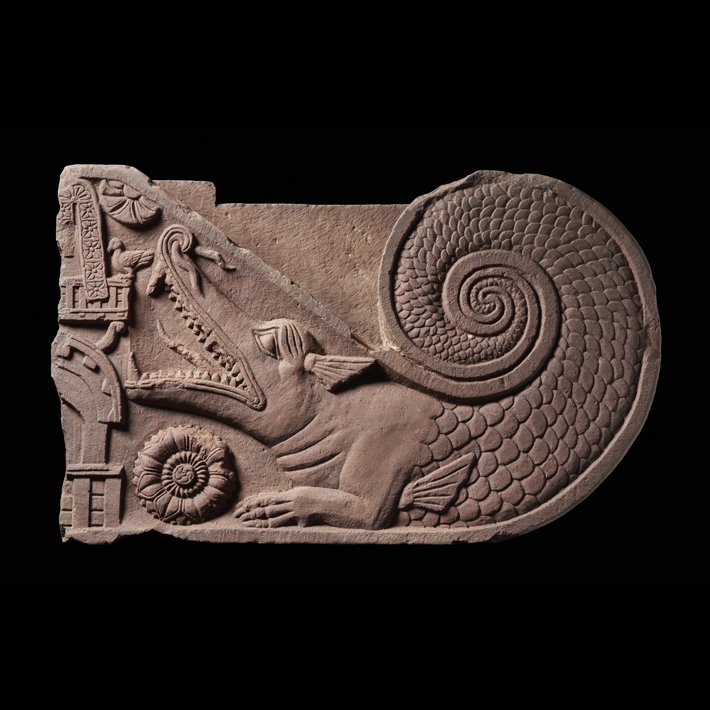8.Toraṇa Terminal with makara

- ca. 150–100 BCE
- Bharhut mahācaitya, Satna district, Madhya Pradesh
- Indian Museum, Kolkata
Spectacularly large gateways (toraṇas) marking the entrance to a fortified city or a monastery were a regular feature of early Indian architecture. The oldest to be preserved, in stone, is from the Great Stūpa at Bharhut. While Buddhist lay devotees donated the bulk of the funding for the enclosure railing encircling the stūpa, an inscription on the monumental eastern gateway names it as the gift of Raja Dhanabhuti, likely a member of the Shunga ruling family. This section of the eastern gate projected from the end of one of the structure's three massive crossbars, the architraves. Depicted on both faces is a makara, a legendary aquatic creature composed of hybrid elements: crocodile jaws, an elephant's trunk, finlike ears, and a scaled fish body terminating in a spiral.

 Previous
Previous